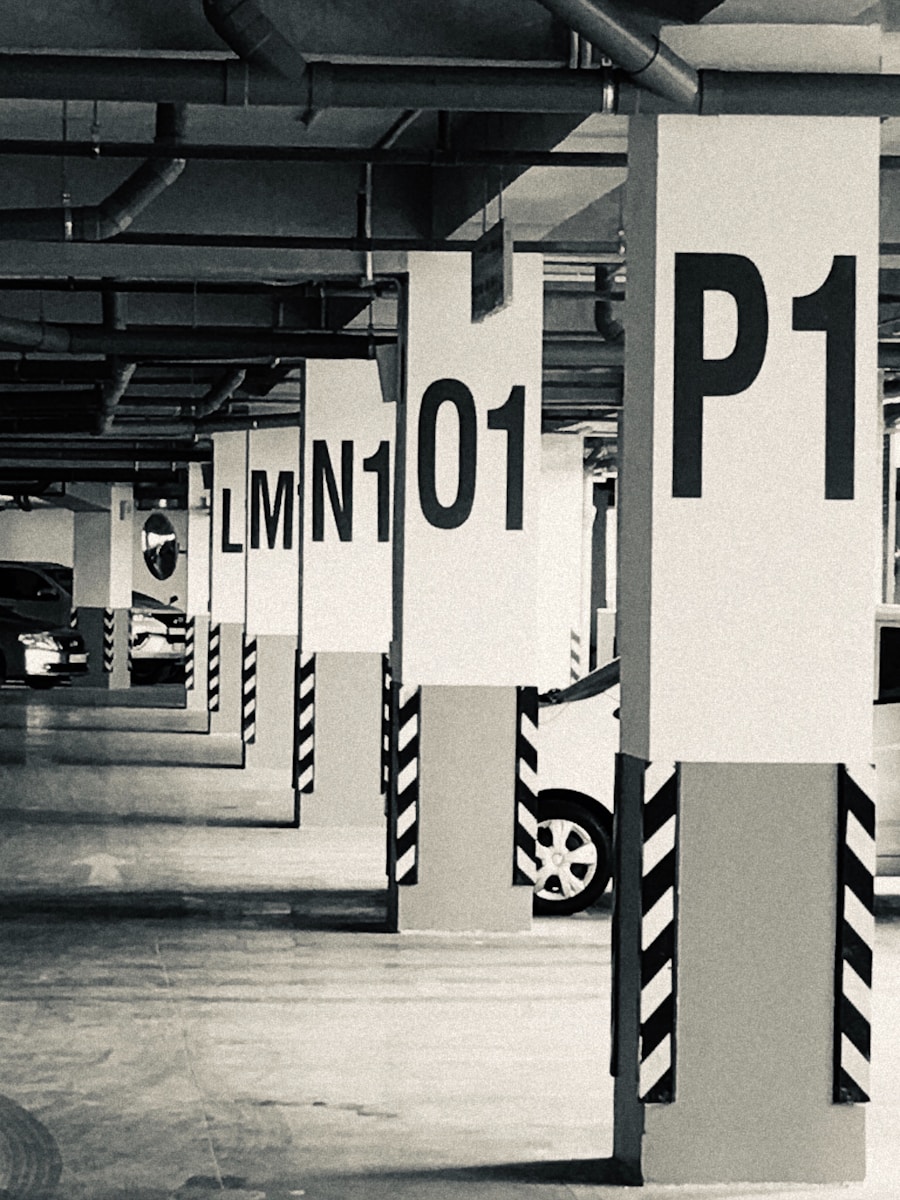As I work on parking design, one of the first concepts that stands out is the importance of understanding parking standard sizes. These dimensions aren’t just numbers — they result from practical experience and research designed to ensure safety, efficiency, and accessibility. Standard parking spaces are typically 9 feet wide by 18 feet long, though they vary based on local regulations and specific use cases.
Compact car spaces are smaller, while truck or SUV spots require more room. Understanding these differences is essential for anyone involved in site planning or development. This knowledge helps ensure compliance with laws and creates designs that work for a wide range of users. Beyond legal adherence, parking standards also affect user flow, accessibility, and site aesthetics — all critical to a development’s success.
Key Takeaways
- Understanding standard parking sizes supports efficient site design.
- Incorporating these sizes helps maximize use of space and streamline traffic.
- Standard sizing simplifies parking for drivers and increases lot capacity.
- Layout and circulation decisions directly influence safety and flow.
- Accessibility and ADA compliance are essential for inclusive parking design.
Incorporating parking standard sizes into site planning
Incorporating standard parking dimensions into site planning requires strategic thinking. From the start, I evaluate available land and determine how many parking spots can be realistically integrated without sacrificing key site features like landscaping or pedestrian access.
Striking the balance between parking capacity and visual appeal is often a challenge. I use tools like CAD software to model different layouts and see how each affects the overall space. This helps refine the design and make smart trade-offs that satisfy both usability and zoning standards.
Designing parking spaces to meet standard sizes
When it comes to designing parking spaces that meet standard sizes, I am acutely aware that precision is paramount. Each space must be carefully delineated to ensure that vehicles can maneuver in and out without difficulty.
This involves not only marking the boundaries of each space but also considering factors such as turning radii and sightlines.
I often find myself consulting with industry guidelines and best practices to ensure that my designs adhere to established norms while also accommodating unique site conditions. In addition to physical dimensions, I also consider the materials and finishes used in the design of parking spaces. The choice of surface material can significantly impact both functionality and aesthetics.
For example, I might opt for permeable paving solutions that allow for better water drainage while also enhancing the visual appeal of the lot. Furthermore, I pay close attention to signage and lighting, as these elements play a crucial role in guiding users through the space and ensuring their safety. By taking a holistic approach to design, I strive to create parking areas that are not only compliant with standard sizes but also user-friendly and visually appealing.
Designing Parking Spaces to Meet Standard Sizes
When designing standard-sized spaces, precision matters. Every space must allow for safe, easy maneuvering — which means more than just drawing lines. I also account for turning radii, sightlines, materials, and surface finishes.
Sometimes I’ll use permeable paving to improve drainage while enhancing curb appeal. I also plan for lighting and signage that guide users efficiently and safely. Holistic design ensures parking areas are not only compliant but also practical and inviting
Considerations for parking lot layout and circulation
As I explore the intricacies of parking lot layout and circulation, I realize that these elements are critical to ensuring a smooth flow of traffic within a facility. A well-designed layout minimizes congestion and enhances user experience by providing clear pathways for both vehicles and pedestrians. I often begin by analyzing traffic patterns and anticipated usage levels to determine the most effective configuration for a given site.
One aspect I pay particular attention to is the arrangement of entry and exit points. Strategic placement can significantly reduce bottlenecks and improve overall circulation. Additionally, I consider the width of drive aisles, which should be designed to accommodate two-way traffic while allowing for safe maneuvering around parked vehicles.
In my designs, I often incorporate features such as angled parking or one-way circulation patterns to optimize space utilization while enhancing safety. By thoughtfully considering these factors, I aim to create parking lots that are not only functional but also conducive to a positive user experience.
Addressing accessibility and ADA requirements in parking design
Addressing accessibility and ADA requirements in parking design is an essential aspect of my work that I take very seriously. The Americans with Disabilities Act (ADA) sets forth specific guidelines regarding accessible parking spaces, including their size, location, and signage. As I design parking areas, I make it a priority to ensure that these requirements are met or exceeded, recognizing that accessibility is not just a legal obligation but also a moral imperative.
In my designs, accessible spaces must be strategically located near building entrances to minimize the distance that individuals with disabilities must travel. Additionally, I ensure that these spaces are wider than standard spots—typically measuring at least 8 feet wide—to accommodate wheelchair users and other mobility devices. Furthermore, I pay close attention to surface materials and gradients to ensure that accessible routes are smooth and navigable.
By prioritizing accessibility in my designs, I strive to create inclusive environments where all individuals can feel welcome and safe.
Integrating parking standard sizes into mixed-use and multi-family developments
Integrating parking standard sizes into mixed-use and multi-family developments presents unique challenges and opportunities that I find particularly engaging. In these contexts, it is essential to consider not only the needs of residents but also those of visitors, shoppers, and employees who may frequent the site. This multifaceted approach requires me to think creatively about how to allocate space effectively while adhering to standard sizes.
One strategy I often employ is shared parking arrangements, where different user groups can utilize the same spaces at different times of day. For example, residential units may have peak demand in the evening, while retail spaces may see higher traffic during daytime hours. By analyzing usage patterns, I can design a parking layout that maximizes efficiency while minimizing the overall footprint of the lot.
Additionally, I consider incorporating features such as bike racks or electric vehicle charging stations to further enhance the appeal of mixed-use developments. By thoughtfully integrating parking into these projects, I aim to create vibrant communities that cater to diverse needs.
Utilizing technology and innovation in parking design to maximize space
In today’s rapidly evolving landscape, utilizing technology and innovation in parking design has become increasingly important for maximizing space efficiency. As I explore various technological solutions, I am excited by the potential they hold for transforming traditional parking layouts into more dynamic environments. For instance, automated parking systems can significantly reduce the amount of space required for each vehicle by eliminating the need for wide drive aisles and allowing for tighter configurations.
Moreover, smart parking solutions—such as real-time occupancy sensors—enable users to locate available spaces quickly through mobile applications or digital signage.
This not only enhances user experience but also reduces congestion caused by drivers circling in search of a spot.
As I incorporate these technologies into my designs, I am mindful of balancing innovation with practicality; it is essential that any new systems are user-friendly and accessible to all individuals.
Collaborating with engineers and planners to optimize parking design development
Collaboration with engineers and planners is a vital component of optimizing parking design development—a process that I have come to value deeply throughout my career. Working alongside professionals from various disciplines allows me to gain insights into structural considerations, drainage solutions, and traffic flow analysis that can significantly impact my designs. This collaborative approach fosters creativity and innovation while ensuring that all aspects of a project are aligned with regulatory requirements.
During these collaborative efforts, open communication is key. I make it a point to engage in discussions early in the planning process so that we can collectively identify potential challenges and opportunities for improvement. By leveraging each team member’s expertise, we can develop comprehensive solutions that enhance both functionality and aesthetics in our designs.
Ultimately, this teamwork not only leads to more successful projects but also contributes to creating environments that serve their intended purposes effectively. In conclusion, understanding parking standard sizes is just one piece of a larger puzzle in site planning and design. By incorporating these standards thoughtfully into my work—while considering accessibility, technology, collaboration, and innovative solutions—I strive to create functional, efficient, and welcoming parking environments that meet the diverse needs of users today and into the future.
FAQs
What are the standard parking space sizes?
The standard parking space size in the United States is 9 feet wide by 18 feet long. However, there are variations in different countries and regions.
How do I incorporate parking standard sizes into my designs?
To incorporate parking standard sizes into your designs, you should start by familiarizing yourself with the local zoning and building codes. Then, you can use the standard parking space dimensions to allocate the appropriate amount of space for parking in your designs.
What are the benefits of incorporating parking standard sizes into designs?
Incorporating parking standard sizes into your designs ensures that the parking spaces are functional and compliant with regulations. It also helps maximize the efficient use of space and provides a better experience for users.
Are there any variations in parking standard sizes for different types of vehicles?
Yes, there are variations in parking standard sizes for different types of vehicles. For example, compact car spaces are typically smaller than standard spaces, and there are also designated spaces for larger vehicles such as trucks and vans.
What are some common challenges when incorporating parking standard sizes into designs?
Some common challenges when incorporating parking standard sizes into designs include limited space, accommodating different types of vehicles, and ensuring accessibility for people with disabilities. It’s important to carefully consider these factors when designing parking spaces.
Sources:
- U.S. DOJ – ADA Standards for Accessible Design (2010)
- ITE – Parking Generation Manual, 5th Edition
- NACTO – Urban Street Design Guide
- FHWA – Parking Facility Design Guidelines
- San Francisco Planning – Parking Dimensions Reference Guide
- Urban Land Institute – Shared Parking, 3rd Edition
- McKinsey – The Future of Parking and Urban Design (2023)
- IPMI – Technology & Innovation in Parking Design (2022)
Good parking design isn’t decoration — it’s revenue, flow, and customer satisfaction. Reach out and we’ll help you design a facility that works from day one.

